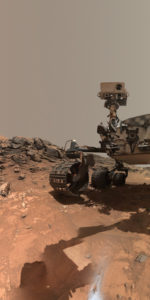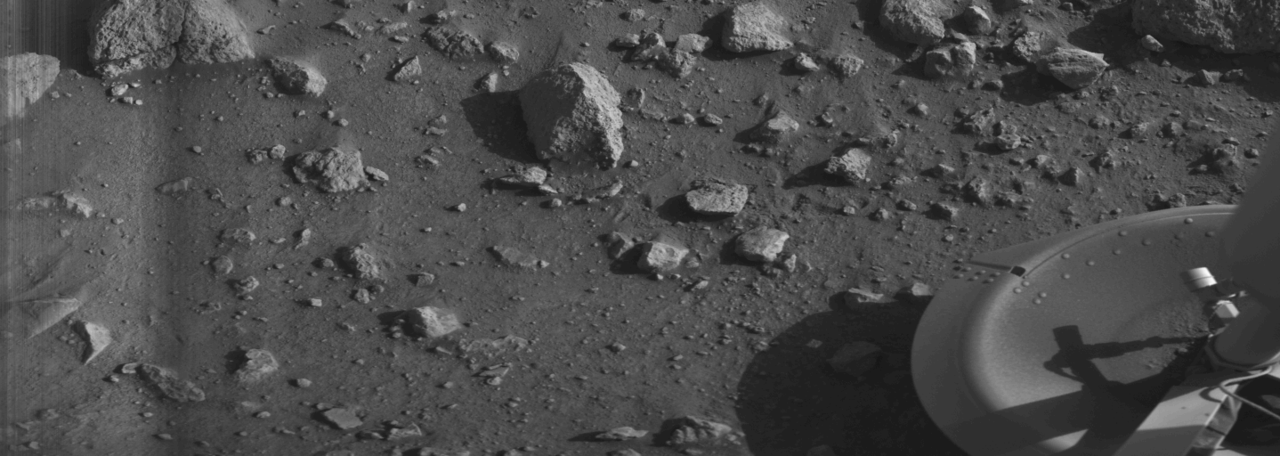
In the second decade of the 21st century, we have grown accustomed to a steady output of scientific data and imagery from our robotic emissaries in orbit and upon the surface of Mars. Spacecraft from the United States, Russia, Europe and India have circled this seemingly most Earth-like of worlds, whilst a flotilla of stationary and mobile landing vehicles have alighted on its ochre-hued plains, revealing tantalizing clues of ancient lakes and oceans, past volcanism and geology which originated in wet environments. Today, in 2015, no fewer than seven spacecraft are operational in orbit around the Red Planet or on its surface. These run the gamut from the oldest to the youngest arrivals—the 2001-launched Mars Odyssey to last year’s Mars Atmosphere and Volatile Evolution (MAVEN) and Mars Orbiter Mission (MOM)—and also encompass the sole remaining Mars Exploration Rover (MER), Opportunity, together with Europe’s hugely successful Mars Express, the Curiosity rover in Gale Crater and the multi-role Mars Reconaissance Orbiter (MRO). Yet 40 years ago, today, the case was quite different. A handful of U.S. and Soviet spacecraft had secured promising results, but repeated efforts to reach the Red Planet met with failure and frustration, and on 20 August 1975 NASA began an audacious attempt to deliver an orbiter and soft-land a stationary vehicle. The findings of Viking 1, and its twin, Viking 2, launched a few weeks later, would literally rewrite the textbooks and reveal Mars in a wholly different light.
Today, these missions are remembered principally for their close-up, clear and in-situ perspectives of the Martian surface, but the twin Vikings—whose orbiters were designed for a 120-day operational lifetime and whose landers for about 90 days’ activity on the Red Planet—endured far longer than intended. Viking 1 became the first spacecraft in history to soft-land on Mars and complete its mission, picking up the baton from the Soviet Union’s failed Mars 3, which had successfully alighted on alien soil in December 1971 and produced a partial, though unintelligible image, before transmission ended and contact was lost. The spacecraft also afforded humanity our best and most complete perspective of the planet for the next two decades and the Viking 1 lander survived for 2,307 days from its touchdown on 20 July 1976 through its End of Mission (EOM) on 11 November 1982. This longevity would remain unbeaten until the Mars Exploration Rover (MER) Opportunity quietly surpassed the operating duration of its predecessor on 19 May 2010.
Costing around $1 billion (or $3.8 billion today), the Viking program was the most expensive U.S. mission yet sent to Mars. It followed on the heels of several highly successful voyages, including Mariner 4, which had become the first human-made machine to fly past the ochre-hued world in July 1965, and Mariner 9, which became the first to enter orbit around another planet in November 1971. Original NASA plans foresaw the launch of “Project Voyager”—not to be confused with the twin-spacecraft program which explored Jupiter, Saturn, Uranus and Neptune—as soon as 1969, atop a Saturn IB/Centaur booster to map the surface from orbit and deposit a stationary lander onto the surface. According to NASA, it would “be capable of more difficult missions than Mariner, carry more scientific instrumentation, collect and return more data and have a longer operational lifetime”. However, when Mariner 4 determined that Mars’ atmosphere was thinner than anticipated, planners recognized that a rocket-propelled braking element would need to be implemented, which increased Voyager’s complexity and weight. Coupled with the October 1965 cancelation of the Saturn IB/Centaur program, this forced a shift of Voyager’s stationary lander onto another vehicle. This produced two options: the hugely expensive Saturn V, whose 39,680-pound (18,000 kg) payload capacity rendered it 6.6 times too powerful to deliver Voyager or the new Titan III-Centaur, whose lifting capability of 2,800 pounds (1,270 kg) was less than half that of the Saturn IB-Centaur.
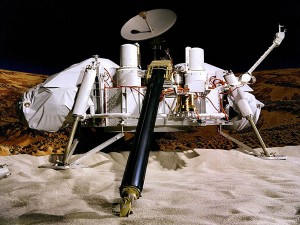
In the meantime, a Voyager orbiter, planned for 1971, was canceled as steadily tightening budget cuts took their toll. The option of using the grossly overpowered Saturn V correspondingly led to the development of a pair of Voyagers to fly aboard the same vehicle, both of which would deliver orbiters to Mars and despatch large landing capsules to the surface to investigate the possibility of extant or ancient life. However, in December 1965, NASA announced that this expanded Voyager mission would occur no sooner than 1973, forcing the program onto a back-burner. Always considered a “second-class” endeavor, behind Project Apollo, the program had suffered severely as monies originally baselined for the space sciences were instead diverted to support the effort to land a man on the Moon. Coupled with the ongoing bloodbath of Vietnam—itself responsible for swallowing around $2 billion each month during this period—Voyager received a $21.5 million cut in June 1967 and finally succumbed to the budgetary ax later that fall.
Had it borne fruit, Voyager’s 2,400-pound (1,100 kg) orbiter would have established itself into a 12-hour circular path around Mars, whereupon it would have entered “site-certification” operations to scour the surface for an appropriate spot to deposit its lander. Protected during the early stages of its descent by a cone-shaped aeroshell, the 13,000-pound (5,900 kg) lander would have entered the Martian atmosphere and employed on-board engines and parachutes to accomplish a soft landing on the Red Planet. Descending at a rate of between 460 feet (140 meters) and 1,100 feet (335 meters) per second, depending upon local atmospheric density, the lander would be slowed by a system of braking rockets and steered towards its touchdown point by an inertial guidance system and radar altimeter. As it neared the surface, its aeroshell would have been jettisoned, by which time its rate of descent would have slowed substantially to a sedate 5 feet (1.5 meters) per second. The engines would have shut down at 10 feet (3 meters) above the ground, allowing the lander to alight gently onto Mars.
It was anticipated that the lander would perform up to two days of science-gathering operations, with subsequent missions—also lofted atop Saturn Vs during subsequent Mars “launch windows” in 1975, 1977 and 1979—expected to include surface rovers. In the meantime, the orbiter would spend at least six months performing topographical mapping, analyzing global temperature profiles, conducting geological and gravitational measurements and examining daily and seasonal surface changes.
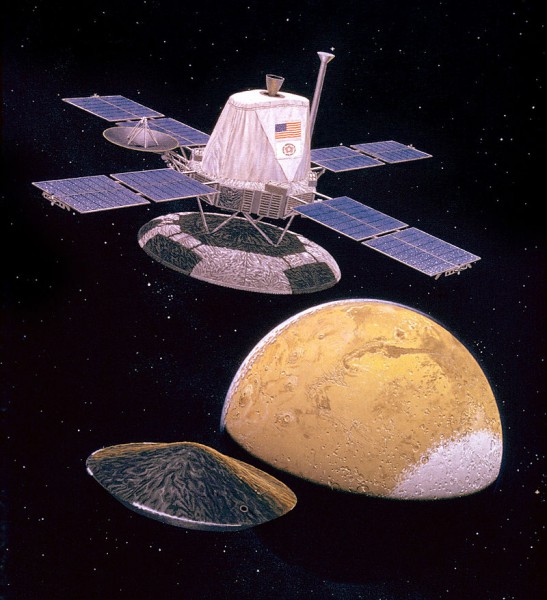
“At first glance, it would appear that the Voyager project…was just another project that never progressed beyond the drafting table, but it was more than that,” explained Edward Clinton Ezell and Linda Neuman Ezell in their NASA History tome On Mars: Exploration of the Red Planet 1958-1978. “Voyager, with thousands of man-hours of work behind it, performed by dozens of specialists and costing many millions of dollars, helped to refine our understanding of the best approaches for a combination orbiter-lander investigation of Mars. Upon the solid foundations laid by Voyager personnel, the Viking team that followed them could construct a successful mission. The story of Voyager’s troubles is essential to an understanding of Viking’s accomplishments.”
Within weeks, in November 1967, that foundation was exploited by NASA’s Office of Space Sciences and Applications (OSSA), which proposed a broader Mars exploration strategy, two key elements of which were a $395 million twin orbiter/“hard-lander” concept (“Titan-Mars ’73 Orbiter and Lander”), boosted by a pair of Titan III-Centaurs in 1973, followed by the more advanced “Voyager-Mars ’75”, despatched two years later, atop a Saturn V, to deliver an orbiter and a stationary surface laboratory to the Red Planet. Under the early plans, the 800-pound (365 kg) Titan-Mars ’73 landers would “transmit limited imagery and measure atmospheric temperature, pressure, wind, soil composition and subsurface moisture”, but subsequent evolution favored a soft-lander over a hard-lander, dependent on whether the problem of contaminating the landing site with retrorockets could be overcome. It was recognized that a soft-lander could carry a more viable scientific payload for a more realistic mission than a hard-lander.
Early proposals were twofold, focusing on either a direct-entry hard-lander and flyby spacecraft or a soft-lander, delivered to the surface from Martian orbit, together with an instrument-laden orbiter. By the late fall of 1968, the project had received a new name—Viking—and the idea of delivering a pair of landers to the surface from fully-instrumented orbiters had gained much support. Achieving a soft landing on the Martian surface was a critical prerequisite before human visitors could be sent to the Red Planet, with atmospheric “entry science” considered a “new frontier” and lander science accorded high priority. Correspondingly, the desire to avoid contamination of the surface and effecting a wide range of experiments made the soft-lander concept preferable to the hard-lander.
Accordingly, NASA decided to pursue the soft-lander route, with an operational lifetime of about 90 days on the surface. “It is a little hard to recapture the mood of the times,” NASA Associate Administrator of the Office of Space Science John Naugle later explained. “But one of the things that figured in my mind was the fact that we were in competition with the Russians. They had a strong program of landers and I felt that we had to establish a good, solid, scientific mission.” Naugle’s words proved somewhat prophetic, for in December 1971 the Soviet Union did soft-land its Mars 3 probe on the surface. However, although it returned a few unintelligible lines of a single image, contact with Mars 3 was lost.
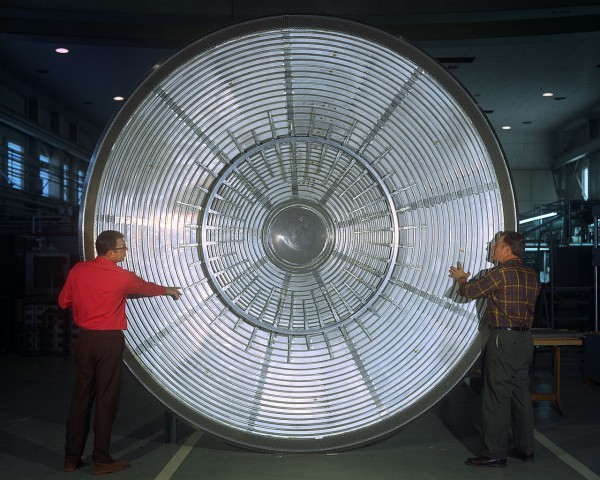
Headed by Project Manager Jim Martin, and with Dr. Gerald Soffen as Project Scientist, the Viking Project Office formally opened in April 1969 and its spacecraft quickly expanded beyond anything previously attempted. In its original incarnation, it was based upon the earlier Mariner series, but it soon became clear that significant structural changes to allow for the mating of the orbiter to the soft-lander would be necessary. Power provision for the lander during the trans-Mars cruise was also acutely required, necessitating the enlargement of the orbiter’s solar arrays from 82.8 square feet (7.7 square meters) to 165.7 square feet (15.4 square meters). “The decision to build a large soft-landing craft, instead of a small hard-lander, led to the requirement for a large orbiter,” noted Ezell and Ezell in On Mars. “The orbiter would not only have to transport the lander, it could also have to carry an increased supply of propellant for longer engine firings during Mars Orbit Insertion.”
However, within its first 12 months of life, Project Viking’s costs began to spiral, from $364.1 million when first presented to Congress in March 1969, to over $606 million by August, to an admission from Naugle by year’s end that $750 million was a more realistic figure. Scathing budget cuts throughout 1970—which notably savaged the Apollo lunar program, forcing the cancelation of two landing missions—ultimately led NASA Administrator Tom Paine to only one viable option: to delay the Viking missions by two years to the summer 1975 Mars launch window. Under this revised architecture, the end-of-conceptual-design Preliminary Design Review (PDR) occurred in October 1971, followed by the Critical Design Review (CDR) in July 1973, leading to the testing and shipment of hardware to the launch site at Cape Kennedy in Florida by February 1975.
In their eventual form—whose design had essentially been finalized at the PDR stage—the twin Viking orbiters consisted of octagonal spacecraft “buses”, measuring about 8.2 feet (2.5 meters) across, and equipped with four electricity-generating solar arrays. The later totaled 160 square square feet (15 square meters) in area, with additional power provided by two nickel-cadmium batteries. A dual-propellant system of monomethyl hydrazine and nitrogen tetroxide supported a liquid-fueled rocket engine for mid-course correction maneuvers and Mars Orbit Insertion (MOI), with subsequent attitude control achieved by 12 compressed-nitrogen thrusters. Communications were afforded by an S-band transmitter and a pair of dish-like antennas. Meanwhile, the landers traveled to Mars in a “quiescent” state, encapsulated within their aeroshells and attached to the orbiters. Six-sided and three-legged, each lander’s footpads formed an equilateral triangle of more than 7 feet (2.2 meters) when viewed from above. Propulsion during the Entry, Descent and Landing (EDL) phase of its mission was provided by hydrazine, with electricity produced by means of a pair of on-board Radioisotope Thermoelectric Generators (RTGs). Aboard each lander was a 200-pound (90 kg) payload, including 360-degree scan cameras, a sampling arm with collector head, a meteorology boom, a seismometer, a biology experiment and Gas Chromatograph Mass Spectrometer to explore Mars’ suitability for microbial life, its chemical composition, weather, seismic nature, magnetic properties and overall appearance. Fully fueled, each orbiter/lander combo weighed about 7,780 pounds (3,530 kg).
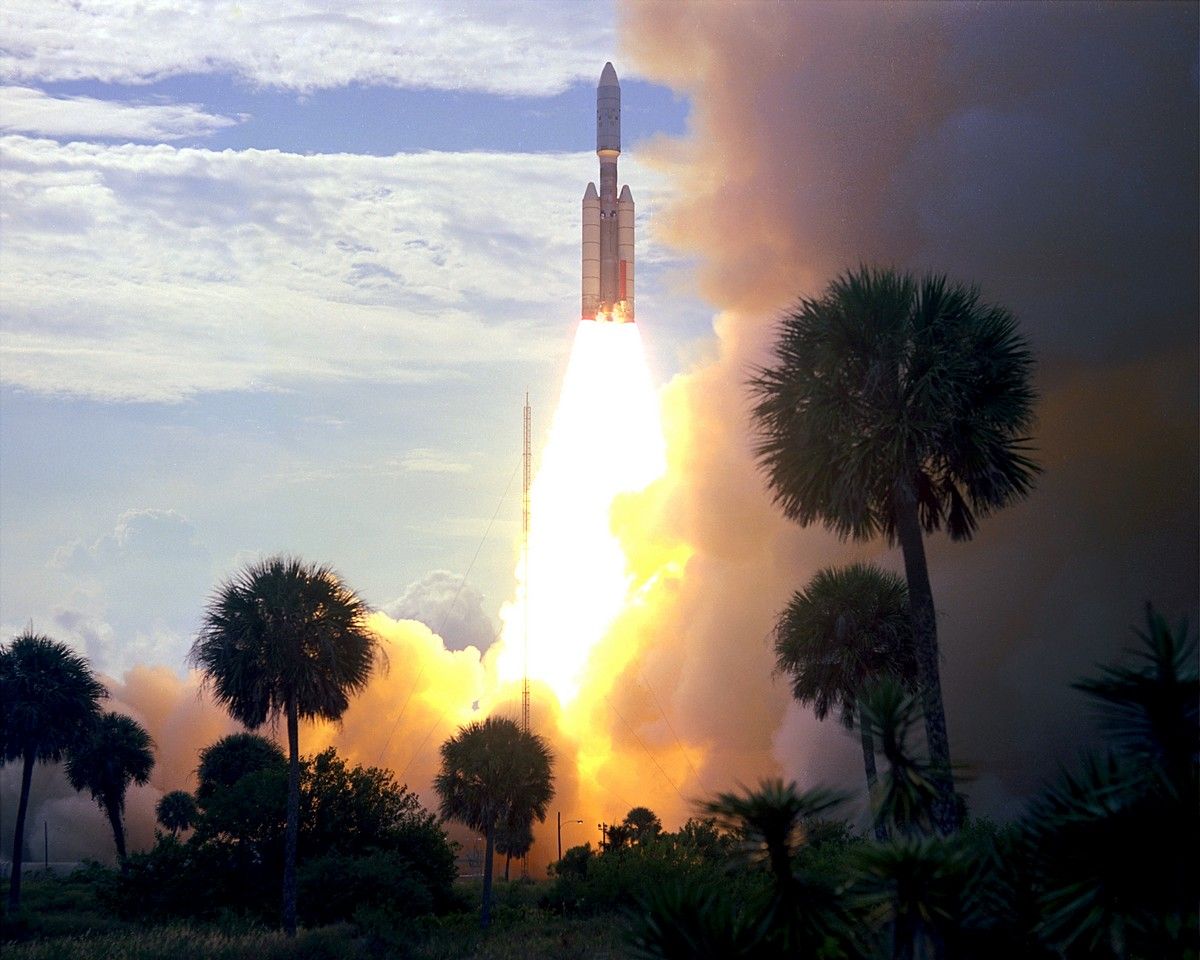
The spacecraft would be launched atop Titan IIIE boosters, supplemented with Centaur upper stages, during August-September 1975. The first Viking flight hardware—in the form of the Titan IIIE core, its strap-on, solid-fueled boosters and the Centaur—arrived in Florida in November-December 1974. This was followed by the delivery of the Viking 1 lander capsule in January 1975, which was quickly subjected to verification checks between its S-band radio transmitter and the Deep Space Network (DSN), and the orbiter in mid-February. These two Mars-bound spacecraft components had been respectively assembled more than 1,000 miles (1,600 km) apart and were mated for the first time on 8 March 1975 for their inaugural round of electrical and mechanical interface testing.
The complete Viking 1 orbiter/lander, encapsulated within its payload shroud, was then transferred to Space Launch Complex (SLC)-41 and stacked atop the 157-feet-tall (48.5-meter) Titan IIIE-Centaur for mating tests. It was a troubled time for the Titan IIIE, whose maiden voyage in February 1974 had succumbed to a liquid oxygen turbopump malfunction in the Centaur upper stage and the vehicle had been remotely destroyed by the Range Safety Officer (RSO). Success for the booster had finally come on its second mission in December 1974, when it delivered the joint U.S./West German Helios-A spacecraft aloft, with the launch of Viking 1 slated to be its third operational flight. In total, the Titan IIIE would fly on barely seven occasions between February 1977 and September 1977, with its final pair of missions successfully boosting the Voyager 1 and Voyager 2 spacecraft onto their lengthy voyages of exploration into the outer Solar System and beyond.
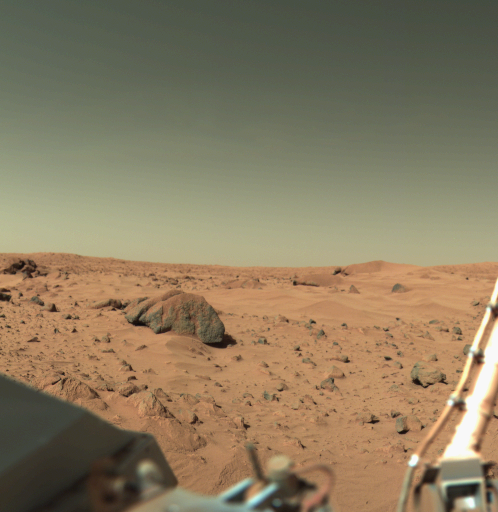
Following mating tests, the Viking spacecraft was then de-mated from the Titan IIIE-Centaur stack and returned to the assembly facility for further flight compatibility checks, including a simulated mid-course correction maneuver exercise in mid-April. Despite issues with grounded circuitry, minor communications problems, problematic computer programs and a localized lightning strike, processing continued smoothly, with both Viking 1 and 2 approaching completion of their pre-flight milestones in tandem, allowing either one of them to be launched first. The lightning strike allowed managers to make use of this dual-processing regime, for electrical charges had damaged a pair of pressure transducers inside the Orbiter Propulsion Module, prompting a decision to swap out the Viking 1 unit for that aboard its twin. “The modular approach to building spacecraft had paid off,” explained Ezell and Ezell in On Mars. “To be able to substitute assemblies when required was clearly advantageous.” A backup pressure transducer unit was refurbished, hurriedly upgraded to operational flight unit status and integrated aboard Viking 2.
In mid-June, the Viking 1 lander capsule was placed into a sterilization chamber, under which it was subjected to extreme temperatures in order to kill all terrestrial organisms and thereby prevent contamination of the Martian surface after touchdown. For more than 43 hours, heated nitrogen gas at a temperature of up to 116.2 degrees Celsius (241.2 degrees Fahrenheit) swirled around the hardware, after which the subsystems were exhaustively tested to ascertain that they had sustained no damage. In the aftermath of this final phase of testing, the Viking 1 lander and orbiter—weighing a combined 7,720 pounds (3,500 kg)—were mated for the final time, ahead of their transfer back out to SLC-41 and integration atop the Titan IIIE-Centaur on 28 July. An operational systems readiness test was concluded the following week and propellants were loaded aboard the booster.
Final countdown operations got underway on 11 August, but the Thrust Vector Control (TVC) valve, responsible for Titan IIIE-Centaur’s directional control, failed to respond correctly during tests and the launch attempt was delayed, then scrubbed. A second attempt on the 14th also came to nothing, following the worrisome discovery that the Viking 1 orbiter’s batteries were producing barely 9 volts—rather than 37 volts—and although it was determined that the problem lay with an external malfunction, it was considered prudent to remove and replace the Viking spacecraft with its twin. “This dual readiness for liftoff,” NASA noted, “prevented a costly delay.” At length, on its third attempt, Viking 1 got underway with a rousing launch at 5:22 p.m. EDT on 20 August and the Titan IIIE successfully delivered its Mars-bound payload into a 102-mile (165 km) orbit, after which the Centaur injected it onto a heliocentric trajectory.
Over the next ten months, Viking 1 journeyed halfway around the Sun. By this stage, its twin, Viking 2, had also been launched, marking the first occasion on which NASA had ever operated as many as four spacecraft—two orbiters and two landers—at the same time, by the same flight control team. Throughout the lengthy cruise, the team and the spacecraft were subjected to exhaustive training tests, including an Uplink Development Exercise in December 1975 to design the primary post-landing mission and several simulated events from February-June 1976 to rehearse everything from Mars Orbit Insertion (MOI) to techniques for sampling the planet’s soil and from the intricately programmed computer sequences dealing with the separation of the lander from the orbiter to its atmospheric entry, descent and touchdown, as well as introducing various anomalies along the way.
By the beginning of June, two weeks before MOI and a month before the descent of the lander to the surface—scheduled for 4 July to coincide with the U.S. Bicentennial—the last full dress rehearsal was conducted flawlessly. On 14 June, the first global images of Mars were returned from the orbiter and, five days later, a perfect MOI burn set the stage for an “orbit-trimming” regime to establish Viking 1 by the 21st into an elliptical site-certification orbit of 940 miles (1,513 km) x 20,500 miles (33,000 km), circling the Red Planet every 24.66 hours. It was the beginning of a spectacular mission, which would see the first Viking soft-lander deposited safely on the equatorial plain of Chryse Planitia somewhat later than intended, on 20 July, kicking off more than six years of uninterrupted operations.
In fact, by the time the Viking 1 lander’s mission ended in November 1982, its on-surface operational record of 2,307 days would remain unbroken for almost three decades, until finally exceeded by NASA’s still-going Opportunity rover in May 2010. In the meantime, from high above, the Viking 1 orbiter imaged the surface at resolutions of between 500 feet (150 meters) and 1,000 feet (300 meters), revealing immense canyons, volcanoes, lava plains, wind-formed features and evidence of ancient surface water. Despite the emphasis upon searching for ancient Martian biology, nothing was found by either the Viking 1 lander or its twin, the Viking 2 lander, which alighted in the vast impact basin of Utopia Planitia. However, these remarkable dual missions—and the four spacecraft which accomplished them—would transform our knowledge of the Red Planet, rewrite the textbooks and provide us with our most complete set of data about Mars for the following quarter-century.
Want to keep up-to-date with all things space? Be sure to “Like” AmericaSpace on Facebook and follow us on Twitter: @AmericaSpace




